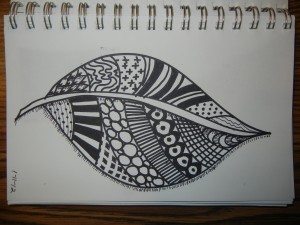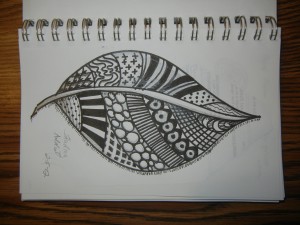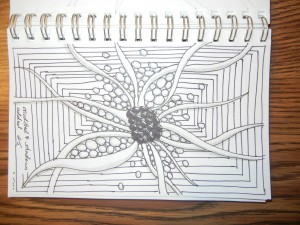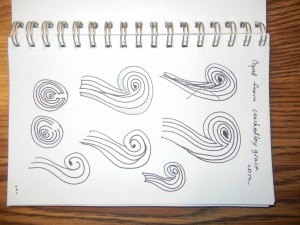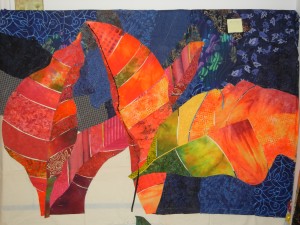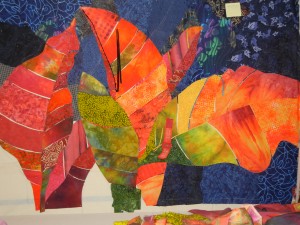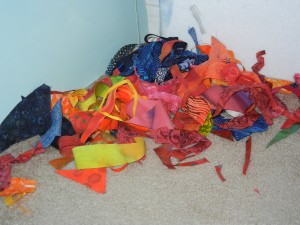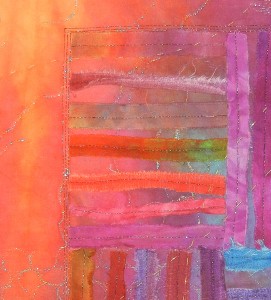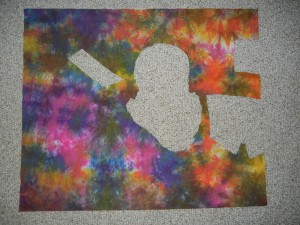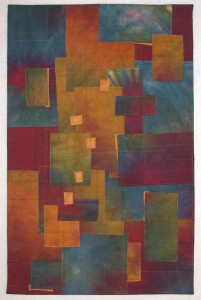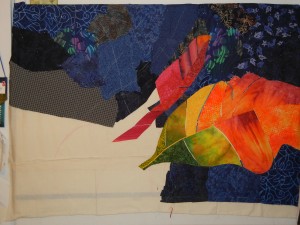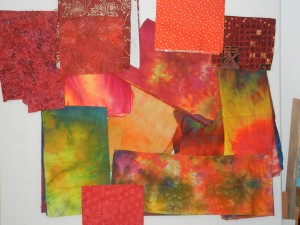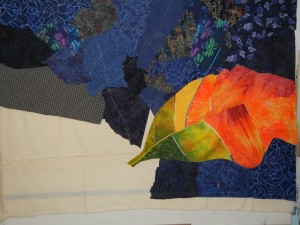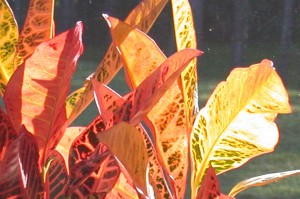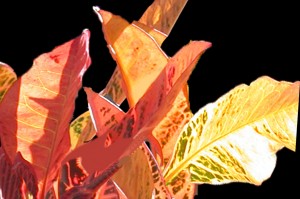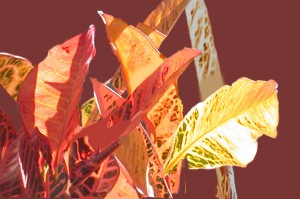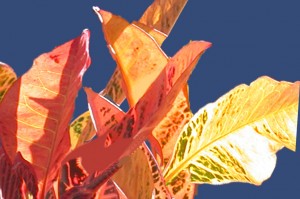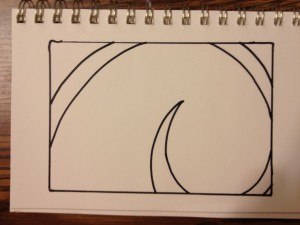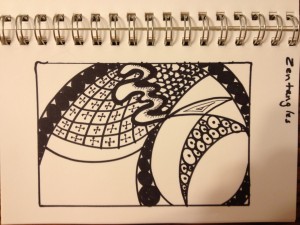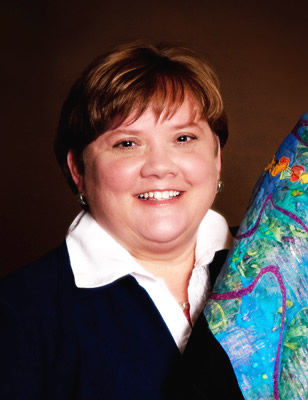When Visible Veins are Good (Croton Quilt)
After completing the leaves on my Croton quilt, it was time to move it from the design wall to the table. This involves switching the pins from push pin mode to holding-fabrics-together mode.
The photo below shows my progress at about the half way point. The left portion has been freed from the design wall and is all pinned to the muslin. It’s scrunched up so I can reach behind it to the next part, which is still secured to the design wall.
Click any image for a larger view.
Next, came the veins. In the photo below I added blue veins to the leaf on the right. LOVE the color contrast, but I wasn’t sure it showed up well enough.
I did the fuchsia leaf in the same fashion. Not sure it showed well enough either. When I got to the green leaf, I cut the fabrics so the veins were wider.
That definitely showed up better. Which means I had to rework the first two leaves. The photo below shows that, as well as the far left leaf done.
Only the big orange leaf remains. The photo above shows me auditioning vein colors.
All of this took much longer than expected! Soon, though, I’ll be ready to start stitching.
Ellen Lindner
P.S. Learn more about my collage and pinning technique here.




